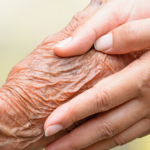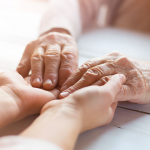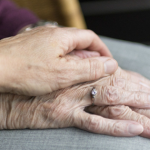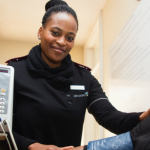Preparing for At-Home Care: 5 Steps for a Smooth Transition
Healthcare advocacy is the branch of healthcare involved in providing needed health and medical resources to communities and individuals. According to AHRQ.gov, a health advocate is defined as a “hired professional who can ask questions, write down information, and speak up for you [the patient] so you can better understand your illness and get the care and resources you need.” Basically, a health advocate (also known as a patient care or healthcare advocate) is the person assigned by seniors or their families to make sure the elderly patient’s needs are met.
Technically, anyone can be a patient care advocate, including a family member or trusted friend of the patient. But for the purposes of this article, we will be focused on the hired professional as an adult guardian for the patient. Senior living facilities and nursing homes are typically for individuals age 55 and over, but many adults would be happier living in their own homes. Thanks to elder care service through healthcare advocacy, it’s actually possible to keep your aging parent living contentedly at home, without compromising your own lifestyle.
1. Ask—and Answer—the Right Questions
When preparing to hire a live-in care guardian, first answer the following questions for yourself:
- Is care for your loved one more important during the day, or at night?
- Does the patient require physical assistance with getting up, sitting down, using the bathroom, and other basic functions?
- What are the basic tasks a caregiver needs to fulfill?—provide companionship, remind your loved one to take their medications, or perform light housework?
- Do you or the patient want the adult caregiver to be a member of your religion or culture?
2. Collect Important Patient Information to Share With the Caregiver
You will need to share all medical information with the caregiver, so they’ll know exactly what they’re supposed to do and what to expect. Take the following into consideration:
- Contact information for your loved one’s doctor, social worker, and pharmacy, as well as emergency contact numbers for you and any other family members.
- The patient’s medication schedule.
- Your loved one’s physical therapy or activity routine.
- Any allergies the patient may have.
- Your love one’s dietary requirements.
- Any advance directive or living will instructions from the patient.
- Any additional relevant information that the caregiver may find helpful in the future.
3. Secure All Private or Sensitive Items
While it’s true that most healthcare advocacy workers have good integrity, for the legal benefit of all involved, it’s important to collect all sensitive personal documents and valuables. Secure these items in a locked desk, file cabinet, safe deposit desk, or at your home with you.
It’s also important to consider whether you or your loved one is going to be comfortable with the caregiver collecting the mail. Instead, you might want to have the patient’s mail sent to your own home or a Post Office Box.
4. Setup a Private Room for the Caregiver
There will most likely be times when your loved one wants time alone, or to be with guests. There will certainly be times when the caregiver needs to be off by themselves in their own space for a little while. Therefore, it’s important that the caregiver have one room that’s all their own for as long as they’re on duty.
5. Make Basic Preparations Around the House
To make sure the transition to live-in help from healthcare advocacy goes smoothing (and stays that way), the following are some things you can do in advance:
- Outline any rules that will apply to the caregiver and anyone else living in the home—things such as what kinds of music and media can be consumed outside of one’s private room; acceptable volume levels; lights-out times; personal phone calls and internet use; etc.
- Buy a notebook for keeping notes on the patient’s condition, medication, and activities, and place it in a centralized location so the caregiver and family members can access and update it.
- Setup a baby monitor so the caregiver can sleep in their own room, and still hear your loved one if they need anything.
- Label the shelves and items in the refrigerator to help the caregiver keep track of the patient’s diet, and to make room for the caregiver’s own meals and drinks. You might want to organize specific cabinets for non-refrigerated items and medications, as well.











